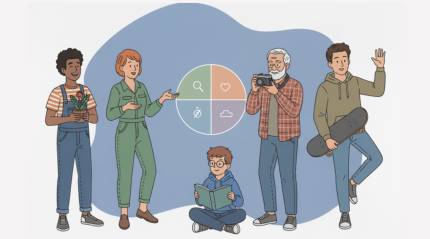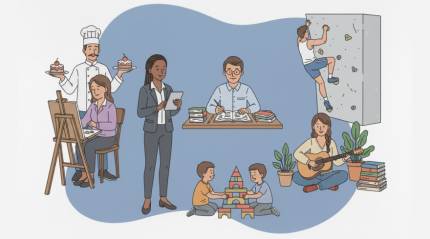The 16-Type Personality Test: A Practical, Research-Informed Guide
- 13 November 2025

16 Personalities Test Online: Find Your MBTI Type
Get StartedWhat This Assessment Is and Why It Matters
The 16-type framework is a widely recognized approach to mapping how people gather information, make decisions, organize their environment, and direct their energy. Rather than ranking individuals as better or worse, it highlights distinctive cognitive preferences that show up in daily choices, conversations, and problem-solving. When used thoughtfully, it becomes a powerful mirror for strengths, blind spots, collaboration styles, and long-term growth paths. The goal is not to pigeonhole anyone but to provide language for patterns you might intuitively sense yet struggle to articulate.
Developed from Jungian theory and refined by decades of practitioner insights, the approach translates complex ideas into concise, memorable codes. In that spirit, many readers explore a modern interpretation through the 16 personality type test to illuminate predictable stress triggers, communication preferences, and motivators. With the right guidance, those insights fast-track self-awareness without reducing your nuance to a cartoonish stereotype.
Plenty of people prefer to dip their toes in before diving deep, and a casual format can make the first encounter less intimidating. For early exploration, a concise option like a 16 personality type quiz can offer a quick snapshot, then point toward richer resources that unpack tendencies across work, study, and relationships.
- Build vocabulary for your natural strengths.
- Spot friction patterns before they escalate.
- Choose learning strategies that match your wiring.
- Frame feedback in ways others can actually hear.
How the Model Works: the Four Preference Pairs
At the core are four preference pairs that describe repeatable, observable tendencies: where you focus attention (outward or inward), how you prefer to take in information (concrete or conceptual), how you weigh decisions (objective criteria or personal values), and how you approach structure (decisive plans or adaptive options). Combined, these preferences form sixteen unique configurations, each with recognizable patterns under calm and under stress. No configuration is inherently superior; each shines in specific conditions and can stretch in others with mindful practice.
Accurate results depend on honest answers and reflection, because the instrument aims to capture what is most natural rather than what is merely learned or socially rewarded. When you respond to a 16 personality types questionnaire, try to picture your default setting on a relaxed weekend rather than a high-pressure moment at work. That framing helps the output resonate with your lived experience.
| Dichotomy | Core Focus | Helpful Prompt |
|---|---|---|
| Extraversion vs. Introversion | Direct energy outward vs. inward | Where do you naturally recharge after a long day, and why? |
| Sensing vs. Intuition | Concrete details vs. abstract patterns | Do you first notice facts on the ground or emerging possibilities? |
| Thinking vs. Feeling | Impersonal logic vs. human impact | Which weighs more when tough choices arise: criteria or consequences for people? |
| Judging vs. Perceiving | Structured closure vs. flexible openness | Do you prefer early decisions or options that stay open longer? |
Once you understand the building blocks, you can better interpret the code and the narrative that accompanies it, moving from labels to lived behaviors. For deeper accuracy, look for instruments that provide clarity about methodology and reliability, then compare narratives across sources tied to the 16 personality types test so you can triangulate the interpretation that best fits your context.
- Answer based on long-term tendencies, not temporary roles.
- Reflect on calm, everyday scenarios for truer signals.
- Validate results with trusted colleagues or friends who know you well.
Benefits: Self-Knowledge, Communication, and Career Momentum
Clarity about preferences can dramatically reduce friction in teams and relationships. Once you recognize why certain tasks drain you and others energize you, it becomes easier to ask for what you need and to deliver what others expect. The framework’s real magic appears when theory meets practice: scheduling work to fit focus rhythms, negotiating deadlines that match planning styles, and crafting messages that resonate with varied decision-making lenses.
For newcomers, a short-form experience can provide an approachable on-ramp that sparks curiosity without overwhelming detail. After an initial snapshot, exploring insights linked to a 16 personality types quiz can guide targeted experiments, such as altering meeting formats, tweaking study habits, or reframing feedback for clearer impact.
- Improve collaboration by decoding preferences quickly.
- Reduce burnout by aligning tasks with natural strengths.
- Speed up learning by matching techniques to information style.
- Navigate conflict by translating priorities into shared language.
Managers and mentors often use this lens to tailor coaching, set expectations, and distribute responsibilities that play to each person’s comparative advantages. In career design, referencing narratives associated with a 16 types personality test helps clarify role fit, advancement paths, and training investments, ensuring development plans feel both realistic and energizing.
How to Take the Assessment and Interpret the Results Wisely
Preparation matters, because mindset shapes the data you provide. Choose a calm environment, avoid multitasking, and answer instinctively rather than gaming the system. If a question feels situational, imagine your “most you” self when the stakes are low and you have freedom to operate as you prefer. That internal compass tends to surface more reliable patterns than a workplace mask or a temporary coping style.
If you want a richer narrative, consider longer-form instruments, yet keep expectations clear and realistic about what any tool can offer. Many practitioners recommend reading multiple type profiles after a 16 type personality test so you can compare nuances and claim the description that rings truest beyond surface labels.
Budget-conscious learners can still gain value with reputable options that publish transparent guidance and practical next steps for everyday life. In that case, look for platforms that pair clear explanations and follow-up exercises when you explore a 16 personality type test free, because the post-result coaching is often as important as the initial classification.
- Read at least two adjacent type profiles to spot fine-grained differences.
- Journal examples from your week that confirm or challenge the narrative.
- Revisit results annually, noting growth and context shifts.
Real-World Applications: Teams, Leadership, and Everyday Decisions
Effective teams rarely happen by accident; they’re built by aligning diverse preferences toward a shared objective. Leaders who understand type dynamics can shape meeting cadence, decision processes, and role design that bring out the best in every contributor. Individuals benefit too, using insights to craft routines that conserve energy for high-impact work while keeping enough flexibility to adapt when conditions change or when collaboration requires a different approach than personal default.
Organizations that invest in meaningful learning experiences often combine foundational education with practice-based coaching and scenario planning. That layered approach works well for groups that start with a resource comparable to a 16 personality types Myers-Briggs test free, because participants can experience core ideas quickly, then go deeper with workshops that convert theory into repeatable habits.
Independent learners can progress effectively with self-study, reflection prompts, and feedback from peers who observe their behavior across contexts. Momentum grows faster when you choose a resource that pairs practical tips with a structured debrief, especially if you begin with a 16 personality types free test and follow up with targeted action items that reinforce the most relevant behaviors at work and at home.
- Define team agreements for communication, deadlines, and decision rights.
- Balance roles by mixing idea generation and detail execution strengths.
- Schedule deep work to match energy peaks for each contributor.
- Create feedback rituals that honor both logic and values perspectives.
FAQ: Straight Answers to Common Questions
Is this a scientific tool or just a fun typology?
It is best viewed as a practical framework that organizes observable preferences rather than a clinical diagnosis. The most valuable outcomes come from reflective application, coaching, and iterative experiments that translate insights into behavior change over time.
How long does it take to complete an assessment?
Most instruments take 10 to 25 minutes depending on length and the number of items. If you want deeper nuance, allocate extra time to read narratives, compare adjacent types, and consider how patterns differ between calm and high-stress contexts.
What if my results feel split between two letters?
Borderline scores are common, and they can reflect context shifts, learned behavior, or simply a balanced preference. Rather than forcing a rigid label, explore both narratives, then test-drive recommendations to see which strategies actually improve your outcomes this month.
Are there decent options at no cost?
Yes, and quality varies, so review how results are explained and whether they include actionable advice beyond the code. Many learners start with a platform that offers a 16 personality types test for free, then deepen insight through reflection, books, or guided workshops that translate results into durable skills.
Can this help me find language for who I am, beyond stereotypes?
Used responsibly, it can provide vocabulary for patterns that already exist, while also honoring your uniqueness and growth. Many readers describe a sense of validation when articulating experiences they’ve felt for years, particularly when they resonate with a phrase like revealing my true personality type 16 personalities test and then use it as a springboard for practical change rather than a box that limits potential.



